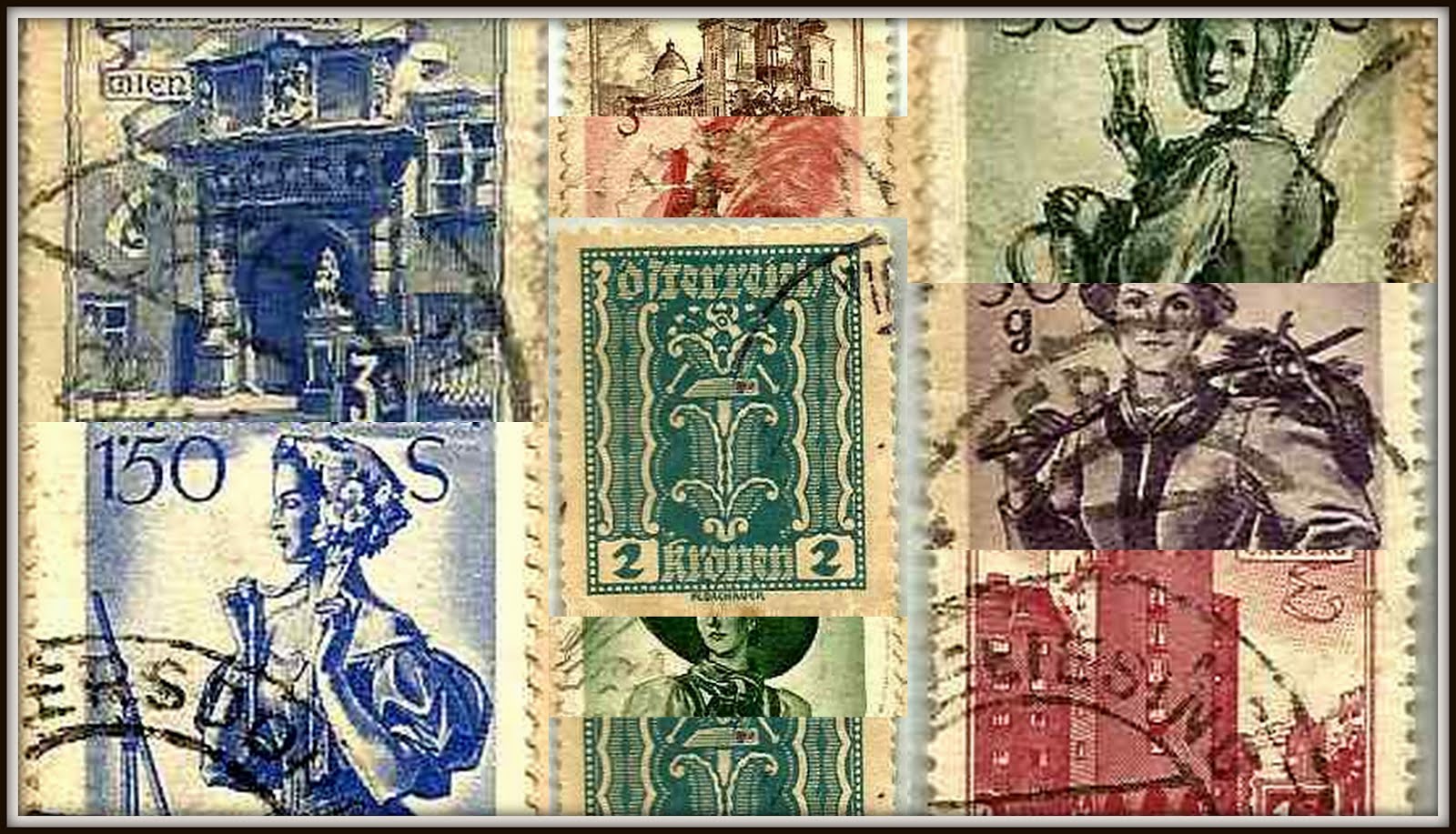 |
| Symbolic subjects AUSTRIA 1922 |
1922, Symbolic hammer & tongs AUSTRIA 2 kronen
Text: 2 kronen Austria
Condition: Ø = used
Title: Symbolic
representations
Face value: 2
Country/area: AustriaIcon-information
Year: 1922
Set: 1922
Symbolische voorstellingen (OOS 51)
Stamp number in set: 3
Basic colour: Blue
Colors: Green blue
Face value: 2kr
Perforation: comb 12½
Usage: Definitive
Type: Stamp
Print run: 14,640,000
Michel number: 362
Catalog codes: Mi: AT 362, Yt: AT 255
Buy Now: Bid Now:
The first issues of German Austria were
overprints reading "Deutschösterreich" on stamps of the empire,
issued beginning in December 1918.
In 1919 the republic issued new designs;
a post horn, the coat of arms, a kneeling man representing the new republic, and
the Parliament building, all done in a vaguely Art Nouveau style, and inscribed
"DEUTSCHÖSTERREICH" ("ÖSTERREICH" appeared in 1922).
However, Austria was caught in the
hyperinflation of the early 1920s, and was forced to print new stamps in
ever-increasing denominations, topping out at a 10,000 kroner value in 1924.
(Even so, Austria was still better off than neighbor Germany, who was issuing
stamps of 50 milliard (!) marks at the time.)






